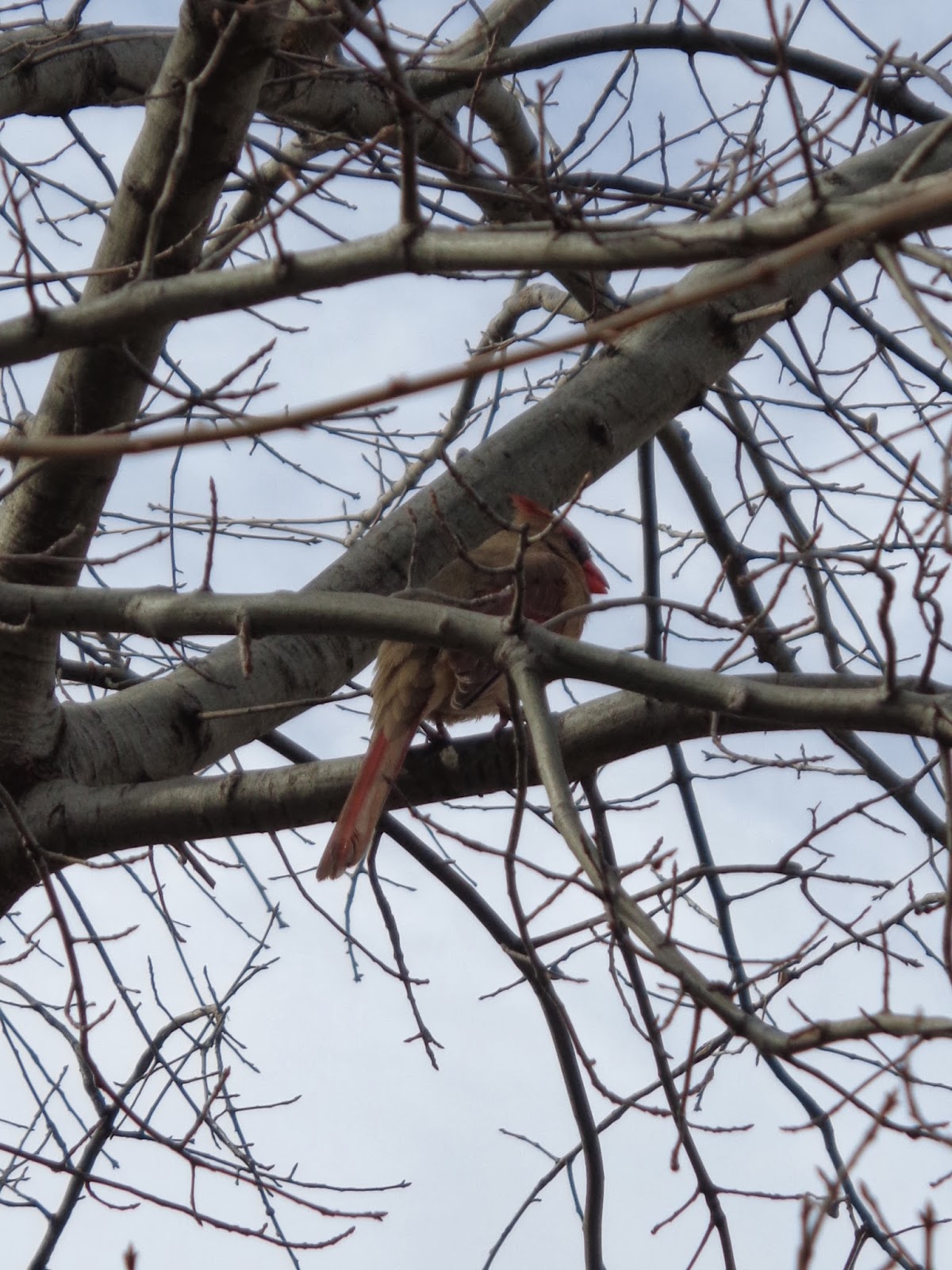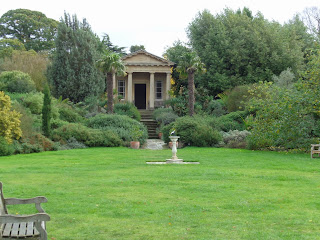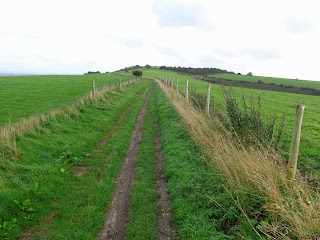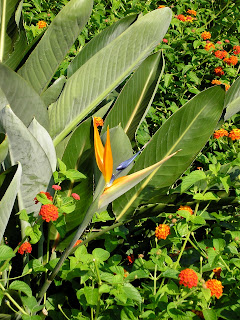Rock pigeons (Columba livia). An introduced species.
Male house sparrow (Passer domesticus), another introduced species (and probably the most common bird downtown). The male is distinguished by the gray cap, gray cheeks, black stripe from the eye to the beak, and black throat.
Another male house sparrow. Note also the black bib on his chest.
Female house sparrow. As is the case with many dimorphic bird species (i.e., those in which male and female look different), the female is drabber than the male.
European starling (Sturnus vulgaris). Yet another introduced species that is very common. Note the iridescent shimmer in the sunlight.
Compare the starling with the two male redwinged blackbirds (Agelaius phoeniceus), which belong to a native species. The shoulder patches on the blackbirds show only whitish orange when they are on the ground, but once they take off a bright red patch is revealed there. The blackbirds are not that common in the city, but are generally found near ponds and wetlands (as here, at Constitution Gardens).
Two American robins (Turdus migratorius). These are very gregarious, so you might find a whole tree full of them.
A Northern mockingbird (Mimus polyglottos), another native species that is very common in the city. Has a very distinctive vocalization - rather than having a particular call or song, it changes its tune about every five notes.
Another Northern mockingbird, with its feathers a bit in disarray from the wind. Note the white patch on the bottom of its tail feathers; this flashes very prominently when it flies off.
A female Northern cardinal (Cardinalis cardinalis). This has the pointed crest and red beak of the cardinal, but a much drabber body than the bright-red male cardinal. I saw two female cardinals over the past two weeks, but no males.
A blue jay (Cyanocitta cristata) that lives in Constitution Gardens.
What gorgeous coloration on its wings and tail!
The dominant species at Constitution Gardens is of course the Canada goose (Branta canadensis). You will note that this particular individual has been ringed on the right leg.
Also quite common are mallards (Anas platyrhynchos), yet another dimorphic species with flashy males and drab females.
And at least now, during the winter, you will also commonly see the ring-billed gull (Larus delawarensis). Note the spotting on the head; this is characteristic of the non-breeding plumage.
But Constitution Gardens also hosts somewhat less common birds, for example these three male ring-necked ducks (Aythya marila). Unlike mallards, which merely dabble (i.e., dunk in their head), the ring-necked ducks (which are somewhat smaller) will actually dive fully underwater for their food.
Also living at Constitution Gardens this winter is this American coot (Fulica americana).
And among all the mallards is also this feral Peking duck, which is a domestic breed that is larger than a mallard.

























































